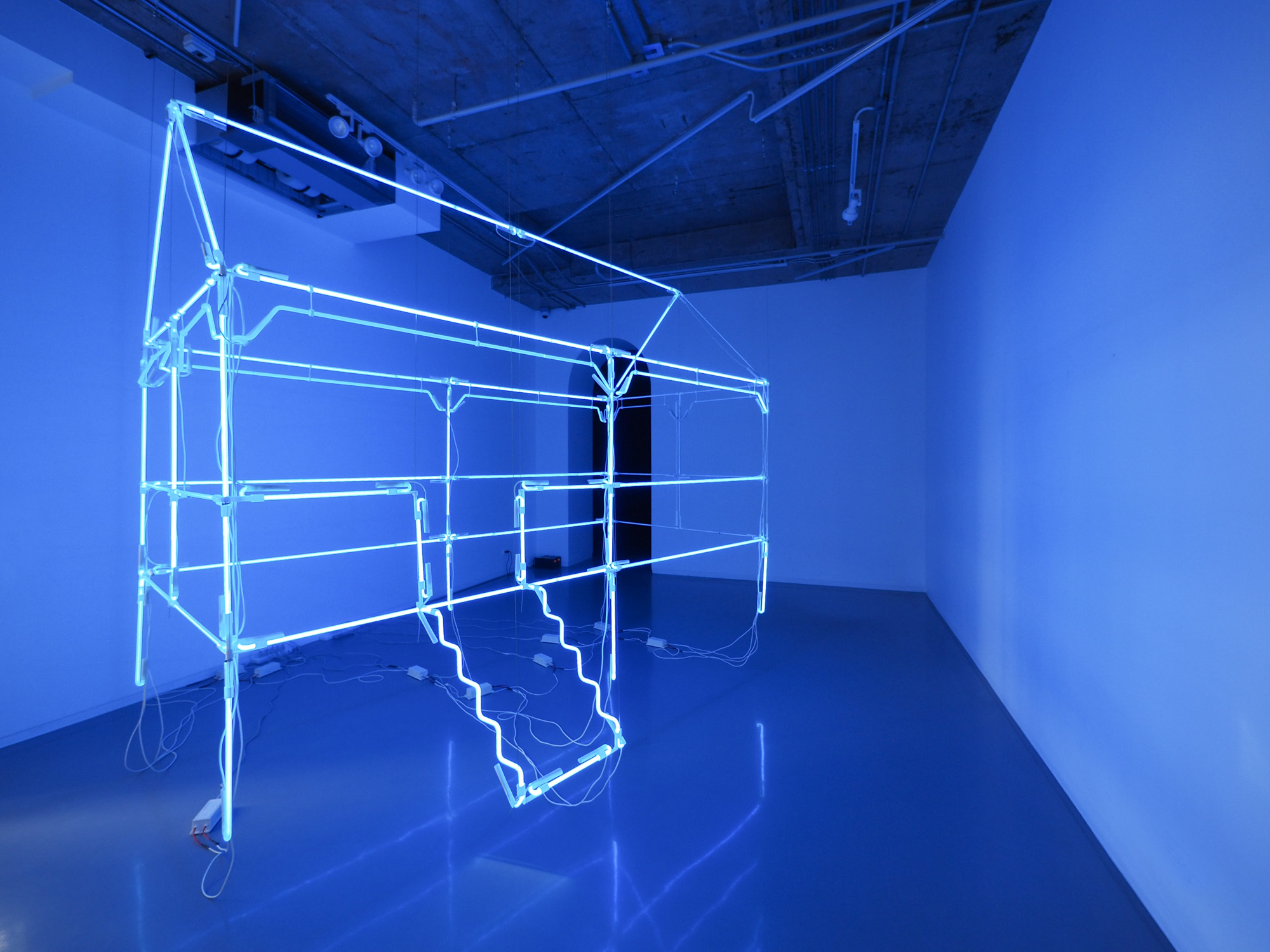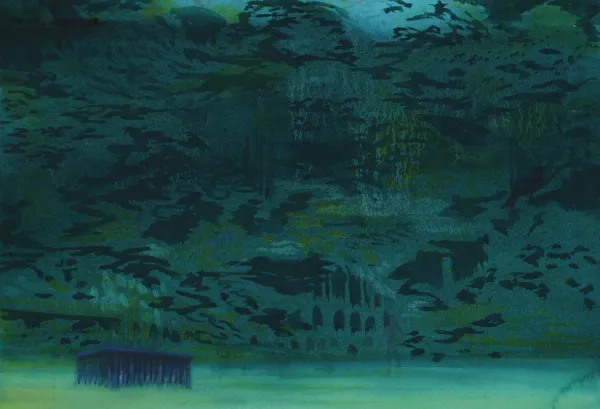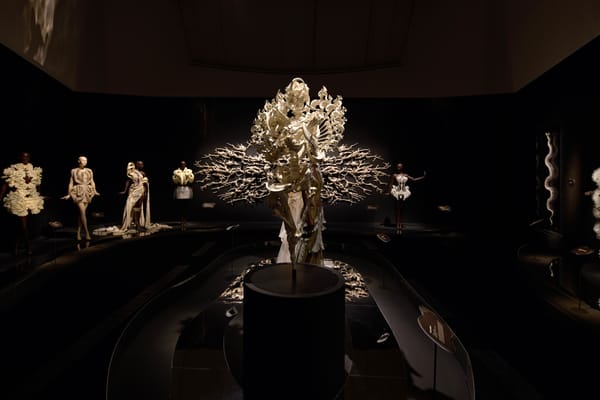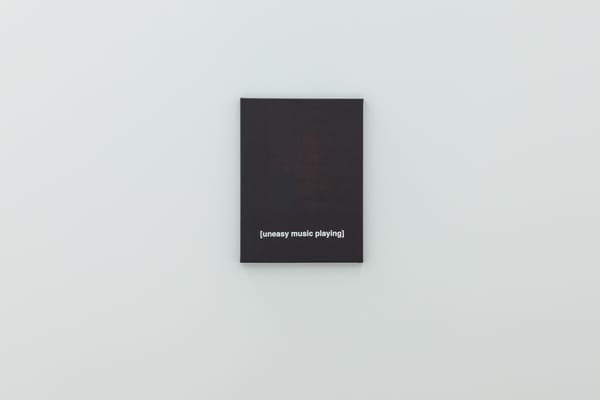Shows
“A Life Beyond Boundaries (The Geography of Belonging)”


Colored flags and bright textiles—symbols of nation and nationality, cultures and traditions—opened and closed “A Life Beyond Boundaries (The Geography of Belonging)” in Bangkok’s JWD Art Space, like bi-parting doors that revealed glimpses of the broader tensions complicating a seemingly straightforward set-up.
Borrowing its title from the memoir of political scientist Benedict Anderson, best known for his study of nation as an “imagined community,” the survey encompassed works by 14 artists that investigate questions of nationality and identity in Southeast Asian contexts. Curator Loredana Pazzini-Paracciani focused on artworks that question the national frame, and instead emphasize the personal, communal, and regional as complex avenues through which the artists may relate to socio-political and economic realities.
Departing from the artist’s experience of pawning family heirlooms in hard times, Wantanee Siripattananuntakul’s sculpture L.I.N.E. (2021)—a single 23.16-carat gold thread, austerely strung from wall to floor—captures Thailand’s pandemic-aggravated economic crisis and growing divide between the haves and the have-nots. Also responding to political circumstances are Soe Yu Nwe’s pastel-coloured, ceramic installations and drawings that feature wriggling serpents from which Padauk flowers—a Burmese national emblem—sparingly blossom. The serpent, a symbol found in cultures across Asia, appears fragmented here, representing a transboundary, decomposed, and recomposed identity. Several recent drawings depict the three-finger salute—used by protesters in Myanmar and Thailand to signal their opposition to military juntas—emerging from the snake’s body in a reference to the ongoing fight for democracy in the region.
Intersectionalities are also present in Citra Sasmita’s gender-bending paintings. Timur Merah Project VI (2021) reprises Balinese folkloric narratives as well as traditional techniques, yet inserts previously marginalized female bodies as omnipresent allegorical embodiments of life and nature. Goddesses densely populate the triptych, often with trees sprouting from their bodies. Elsewhere, Vuth Lyno’s suspended neon outline of a stilt house, Sala Samnak (2020–21), alludes to the dwindling communal spaces in present-day Cambodia. Traditionally used for rituals, these buildings also serve as spaces for village ceremonies and discussions. Lyno’s hollowed-out structure projects a cobalt glow that drapes the viewer in dreamlike melancholy.

Various works examined how ascribed categories and borders can present as entrapment, and articulated ways to subvert these frames. For instance, Boedi Widjaja’s installation of ten flag-like textiles, A cry a voice and a word that shall echo (2021), reimagines kinships and communities beyond the boundaries traced by colonial powers. The artist transposed the 1955 Bandung Conference’s 10 Principles, which envisaged a decolonial world order, into a color-based Morse code he devised based on the shades of the flags of the 120 countries in the anti-imperialist Non-Aligned Movement. Widjaja’s textiles may not represent officially recognized states, but like conventional flags, they are visual manifestations of shared aspirations and affirmations.
Meanwhile, Pathompon Tesprateep’s 16mm short films explore conflicted identities, anchored in ethnic and religious separatism in South Thailand. Part I: Pleng-Krom-Dek (Lullaby) (2019) depicts a retired Buddhist teacher from South Thailand chanting in Chehe, the vernacular of Tak Bai, where 85 protestors from the area’s Malay Muslim community were killed by the Thai military in 2004. The artist paints an unsettling picture of South Thailand’s ongoing ethnic conflict in this work, wherein calls for peace and harmony, political parroting, and cradlesongs become sonically blurred. Part II: Fatimah and Kulit (2019)—based on writer and activist Assanee Pollajan’s political short stories from 1946–60—presents the eponymous characters discussing their relationship and their attitudes toward the Thai state. Despite their focus on the South Thailand insurgency, both films transcend their context as they remark on the preservation of the status quo and contemplate the means and goals of political struggle.
Also examining the intricate make of one’s identity is Ly Hoang Ly, who enacts the domestic ritual of chopping and simmering beef bones for Vietnamese phò in Perpetual Ephemeral: A study of Phò (2013). In the accompanying photographic series Ash (2017–21), the stewed bones are transformed into rock-like sculptures, coalescing intangible components of personal identity—odors, memories, gestures, culinary traditions handed down from generation to generation—into material objects. The ashen artifacts—small enough to fit in one’s palm—suggest an enduring ache for rootedness that chimed with the show’s explorations of displacement and belonging.
“A Life Beyond Boundaries (The Geography of Belonging)” is on view at JWD Art Space, Bangkok, from June 1 to October 17, 2021.







